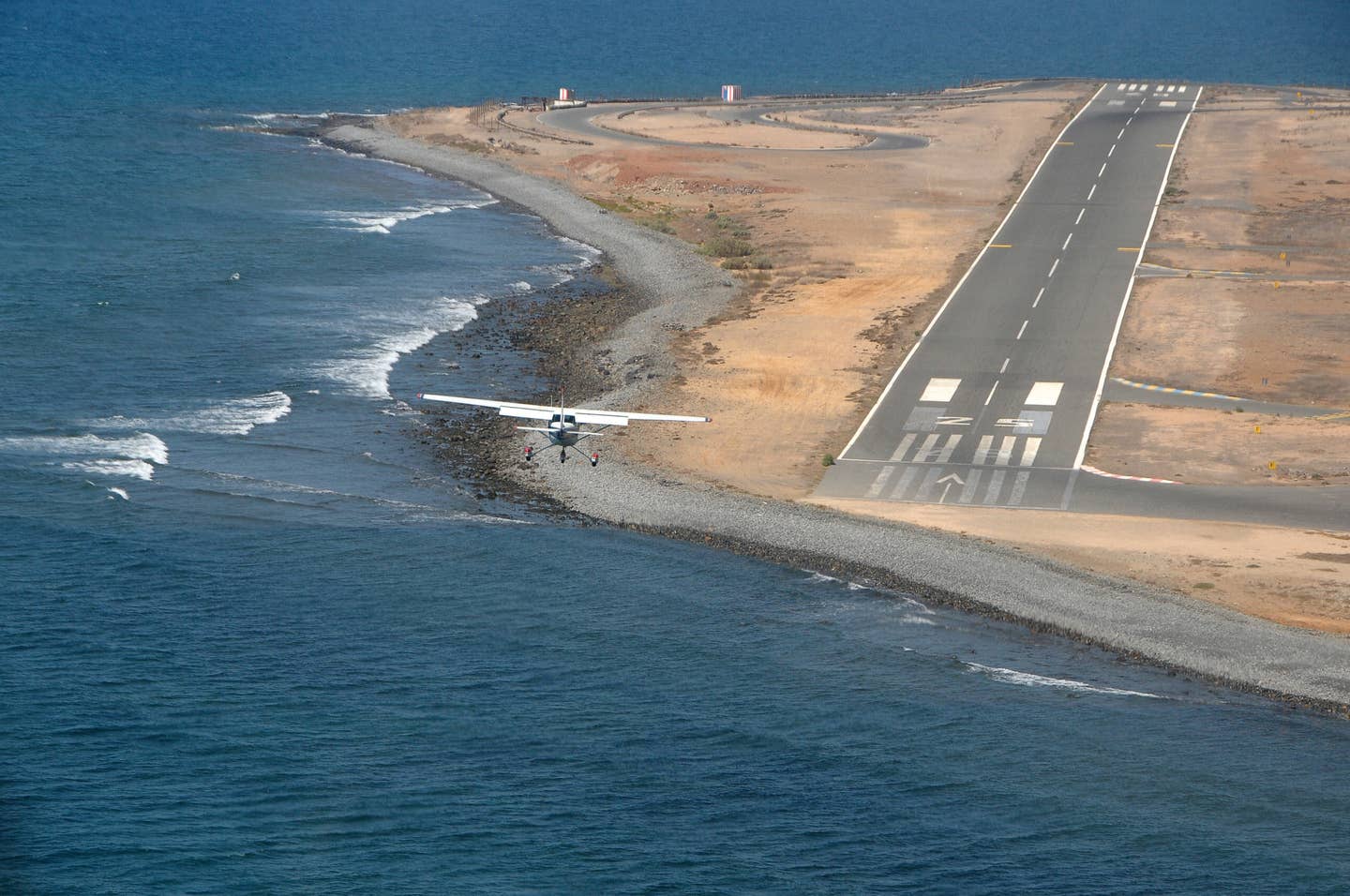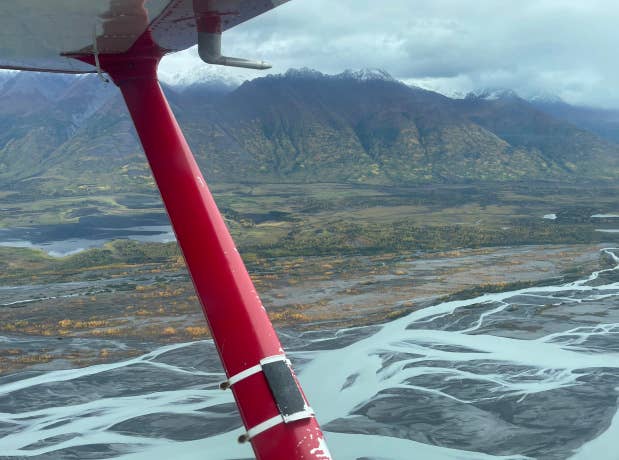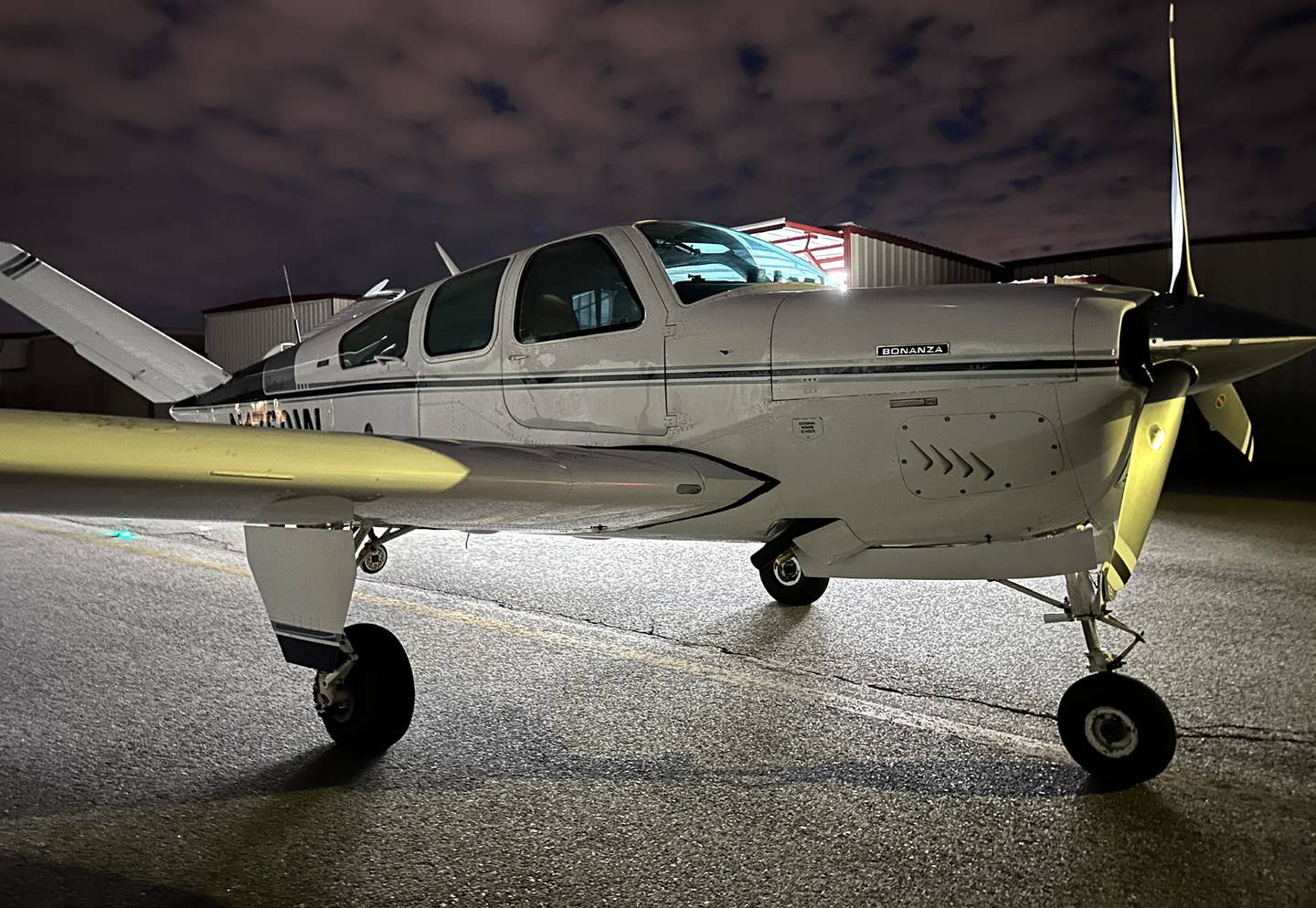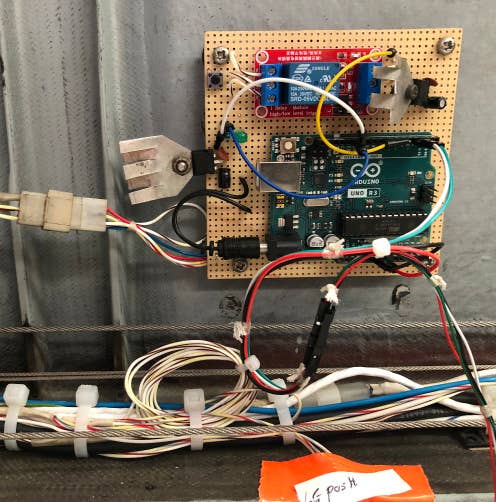FAA Reauthorization Act Revisited
GA-specific legislation is included for the first time.

While precious little meaningful lawmaking occurred in year one of the 118th Congress, there is one very bright spot in year two—the 2024 FAA Reauthorization Act. [iStock]
It's no secret that the politically polarized 118th Congress hasn’t been able to accomplish much. In fact, this Congress has passed fewer bills in its first full year than any since the Great Depression—only 34. As a matter of perspective, the 117th Congress passed 362 bills during the Joe Biden administration and the 116th Congress passed 344 during the Donald Trump administration.
While precious little meaningful lawmaking occurred in year one of the 118th Congress, there is one very bright spot in year two—the 2024 FAA Reauthorization Act.
If you're not already a subscriber, what are you waiting for? Subscribe today to get the issue as soon as it is released in either Print or Digital formats.
Subscribe NowThis legislation demonstrates the good work that can be accomplished when the gap between the party aisle gets as narrow as the aisle in a regional jet. Since most people understand the value of aviation as a safe and efficient time-saving mode of transportation, a powerful job-creating, revenue-generating economic engine at the local and national level, and it’s just plain fun (pun intended), it’s no surprise that the industry is common ground that enables politicians to reach across that narrow aisle and do some serious bipartisan problem solving.
Now that President Biden signed the FAA Reauthorization Act into law, good things will begin happening for aviation, and general aviation specifically. Hidden within the 4-inch stack of paper are mandates that will launch feasibility studies, authorize spending, and create deadlines for decisions that will make GA pilots happy. Not found in the legislation are bizarre amendments often used as concessions to gain necessary support. So, no, there’s no crazy amendment to create a national 100 mph speed limit on interstates with 100 miles between exits. It’s all about solving aviation challenges and planning for the future.
In order to break down the 1,083-page legislation into bite-size pieces to make it easier to digest, start by searching the document for keywords like “general aviation.” You’ll immediately be rewarded with 41 instances of the exact search that lead to where the treasure is buried. Before you get too excited though, a similar doc search for the word “wheelchair” generates 68 occurrences—so there’s that.
This legislation marks the first time the GA has been added as a stand-alone section title addressing its issues. That said, it’s worth taking a deeper dive into what it has to offer that we can all look forward to during the next five years. Keep in mind that some aspects of the legislation are merely an authorization for exploration, not a promise to spend money or fix something.
Still the law draws a line in the sand as to when recommendations must be made so the next step can be taken—that’s progress. And in some cases, like Modernization of Special Airworthiness Certification (MOSAIC), the bill states that a final decision must be made as opposed to kicking the can down the road for five years until the next reauthorization.
What follows are a few examples of how GA benefits from the law. If your interest lies in unmanned aircraft systems, advanced air mobility, commercial transportation, high-altitude balloons, or supersonic flight, you’ll find those topics and more addressed in detail—there is literally something for every GA enthusiast. If your interests are in other areas of aviation, such as commercial seat dimensions, black boxes, wheelchairs, family seating policies, or whatever, there’s plenty of that too, but we’ll not delve into it here.
For the purpose of this piece, we’ve grouped items into airports, airspace, aircraft, and aviators.
Airports
Section 716: Small airport fund
This section helps simplify the distribution of funds to small airports to be allocated for the expansion of aprons intended for transient parking, as GA ramp space is often consumed by locally-based personal, training, and/or derelict aircraft, leaving little or no space for transient parking.
Section 719: Protecting GA airports from closure
Closing even a single airport sets a dangerous precedent. This is often caused by residential areas encroaching on airports that were once well outside of city limits. An example of this is the much publicized battle over the fate of the Santa Monica Airport (KSMO) in California, facing a planned permanent closure in 2028.
An airport’s remoteness does not provide protection either. Some 16 airstrips in Utah’s backcountry are at risk of closure. Countless other airports are being scrutinized by the nonflying public. This section ensures the FAA will help protect GA. Also related is Sec. 756, Banning Municipal Airport, which requires a GAO study on Banning Municipal Airports in California.
Section 726: GA airport runway extension pilot program
While intended to improve safety and accessibility by extending runways at small airports through the Airport Improvement Plan (AIP), one unintended consequence could also be the attraction of larger aircraft and new businesses—there goes the ramp space. Generally speaking, making airports more accessible and attracting larger aircraft and businesses keep the airport strong and attractive for its contributions to the local economy, and making runways longer, wider, and safer is a positive thing.
Section 732: Populous counties without airports
This section requires the FAA to include a new airport in the National Plan of Integrated Airport Systems (NPIAS) as long as the new facility is planned for the most populous county of a state that does not already have one.
Section 740: Permanent solar powered taxiway edge lighting systems
Exploring the feasibility of solar-powered taxi lighting at regional, local, and basic general aviation airports, this engineering brief resulting from this project is a first step that could lead to new lighting at airports that currently have none and possible cost-saving as a replacement for existing lighting.
Section 745: Electric aircraft infrastructure pilot program
As the electrification of GA advances rapidly, this section launches a five-year pilot program allowing up to 10 eligible airports to acquire, install, and operate charging equipment for electric aircraft and to construct or modify related infrastructure as needed to support the project.
Section 749: Airport diagram terminology
This section requires the FAA to update guidance for the clear and consistent use of the terms used to identify the types of parking available to GA pilots. For those of us who have landed at an unfamiliar airport and didn't know where to park, this will help—especially after more ramp space is created as a result of Section 716.
Section 770: Grant assurances
As work ramps up to eliminate 100LL from airports by 2030, there is increasing concern about availability of the avgas until a new solution is readily available. Section 770 states that airports that offered 100LL in 2022 must continue to do so until 2030 or the date on which a FAA-certified unleaded avgas alternative is available to GA aircraft operators (some limitations apply). Airports not in compliance are subject to fines up to $5,000 per day.
Section 783: Expedited environmental review and one federal decision
This section reforms and expands the applicability and responsibility of the FAA’s expedited environmental review process for airport capacity enhancement projects, including new ramp space and safety improvements.
Section 1024: Technology review of artificial intelligence and machine learning technologies
There’s no denying the fact that artificial intelligence and machine learning will have an increasingly greater impact on aviation. This section directs the FAA to conduct a review of existing and proposed AI and machine-learning technology applications that may be used to improve airport safety, efficiency, and operations. The directive requires the FAA to submit a report to Congress by May 2025.
Airspace
Section 760: Washington, D.C., metropolitan Special Flight Rules Area
While not a nationwide issue, airspace around the nation's capital can be unfriendly to GA pilots—particularly those not based in the area and therefore unfamiliar with the challenges and procedures. The FAA and Departments of Homeland Security and Defense will collaborate on a study of the Washington D.C., Special Flight Rules Restricted Zone to identify possible changes to decrease adverse operational impacts and improve GA access to airports in the national capital region.
Section 1012: Electric propulsion aircraft operations study
In conducting the study, the section directs the Government Accountability Office (GAO) to assess the relevant technical competencies required for the necessary regulatory guidance and airport infrastructure requirements to support electric aircraft operations. The section directs GAO to submit a report to Congress with recommendations for legislative and administrative action by May 2026.
Section 1025: Research plan for commercial supersonic research
Supersonic flight has largely been held back by the fact that regulation hasn't caught up to technology (that has largely reduced the window-rattling, goat-frightening sonic boom to that of distant thunder). The FAA will collaborate with NASA and industry experts to provide a congressional briefing that identifies any additional research needed to support the development of revised federal and international policies, regulations, and standards relating to the certification and operation of civil supersonic aircraft for overland flight.
Section 627: Low-altitude routes for vertical flight
Far below supersonic flight levels, this section directs the FAA to initiate a rulemaking process to establish or update low-altitude routes and flight procedures for safer rotorcraft and powered-lift operations in the national airspace system. In initiating a rulemaking, the FAA must consult with various stakeholder groups, including the U.S. Helicopter Safety Team and the union representing air traffic controllers. Low-altitude airspace will become increasingly congested with electric vertical takeoff and landing (eVTOL) aircraft including the drone delivery fleets employed by Walmart and Amazon—see also Section 930 beyond visual line of sight [BVLOS] operations in the aircraft section below.
Section 919: Review of regulations to enable unescorted UAS operations
This section directs the FAA and DOD to review requirements necessary to permit the military to operate unmanned aircraft systems (UAS) in the national airspace without the need for an escort by a manned aircraft. Currently large drones, such as the RQ-9 Reaper and MQ-1 Predator, are escorted in controlled airspace by the Air Force auxiliary shadowing them as a surrogate.
Section 928: Recreational operations of drone systems
For recreational use of drones in national airspace, the FAA will establish a process to approve locations dedicated to UAS operations above the 400-foot ceiling within Class G airspace.
Section 952: Sense of Congress on FAA leadership in AAM
Congress is interested in establishing the U.S. as a global leader in advanced air mobility (AAM). To that end, the FAA is directed to begin working with manufacturers, operators, and other stakeholders to enable the safe entry of these aircraft into the national airspace system.
Section 1012: Electric propulsion aircraft operations study
The GAO has hereby been tasked to launch a study that explores the safe integration and scalable operation of electric aircraft into the national airspace system. A report to Congress is due by May 2026.
Aircraft
Section 361: Continuous aircraft tracking and transmission for high-altitude balloons
Most high-altitude balloon launches for STEM education, weather, and more do not emit signals for identification, which poses a potential hazard to other aircraft in flight. This section requires the FAA to establish an Aviation Rulemaking Committee (ARC) to make recommendations for high-altitude balloons to be equipped for continuous tracking by transmitting basic information about altitude, location, and identity that is accessible to air traffic controllers.
Section 812: Aircraft registration validity during renewal
Delays in the now required periodic renewal of aircraft registration has left some aircraft owners grounded or forced some to fly with an expired registration. Because of the backlog, the FAA would permit an aircraft to continue to be legally operated beyond the expiration date, assuming the operator can establish the fact that renewal was already in progress before expiration. Additionally, Section 817 requires the FAA to take steps to reduce the backlog and process applications within 10 business days after receipt.
Section 824: MOSAIC rulemaking deadline
The much-discussed MOSAIC decision is due within 24 calendar months. Many expect a decision prior to the deadline, but at the very least, a final ruling on the Modernization of Special Airworthiness Certification will occur in 2026.
Section 827: EAGLE Initiative (Eliminate Aviation Gasoline Lead Emissions)
Marching toward the 2030 deadline to eliminate leaded aviation fuel, this section specifies that the FAA will facilitate the safe elimination of leaded avgas, the approval of the use of unleaded alternatives for use in all aircraft piston-engine types, establish the requirements relating to the continued availability of avgas; effort to make unleaded avgas widely available and have developed of a transition plan by 2030.
In developing the transition plan, the FAA must consider: the EAGLE Initiative; airport infrastructure for unleaded avgas; best practices for protecting against exposure to lead contamination; efforts to address supply chain issues inhibiting distribution of unleaded avgas; and efforts to educate pilots and aircraft owners on how to safely transition to unleaded avgas.
Section 906: Electronic conspicuity study
This section directs GAO to study technologies needed on board UAS to detect and avoid manned aircraft that may lawfully operate below 500 feet agl. The study requires GAO to consult with aviation stakeholder representatives and report to Congress on the findings of such study. Additionally, Section 907: Remote identification alternative means of compliance requires the administrator to review and evaluate the FAA final rule to determine if unmanned aircraft manufacturers and operators can comply through alternative means.
Section 930: BVLOS operations for unmanned aircraft systems
This may be a good news-bad news scenario, depending on your perspective. The FAA is creating a pathway for UAS to operate beyond visual line of sight. The proposed rule developed under this section will establish “acceptable levels of risk” for remote pilots to fly BVLOS. Walmart and Amazon Prime Air have already been approved by the FAA to implement this action. Amazon plans to deliver 500,000,000 packages per year by drone by 2030 (the current MK-27 drone is 5½ feet in diameter).
Section 1109: FAA leadership in hydrogen aviation
Not wanting to end up behind the power curve on hydrogen-powered aircraft as a sustainable fuel alternative, this section states that the FAA shall exercise leadership in the development of regulations, standards, and best practices relating to the safe and efficient certification of these aircraft.
Section 1110: Advancing global leadership on civil supersonic aircraft
Also driven to position the U.S. as a global innovation leader in the area of supersonic flight, this section amends Section 181 from the 2018 FAA Reauthorization Act by adding additional reporting requirements. Within one year, the FAA shall submit a report to Congress describing the agency’s efforts related to supersonic aircraft certification.
Aviators
Section 403: Women in Aviation Advisory Committee
It’s no secret that aviation does not reflect the gender diversity in the nation, and efforts to create greater access are ongoing. To that end, the Bessie Coleman Women in Aviation Advisory Committee has been formed to advise the FAA and DOT on matters related to the recruitment, retention, employment, education, training, and career opportunities for women in the aviation industry.
Section 404: FAA engagement and collaboration with HBCUs and MSIs
In a similar fashion, this section directs the FAA to continue to partner with Historically Black Colleges and Universities (HBCUs) and Minority Serving Institutions (MSIs) to promote awareness of educational and career opportunities related to aerospace, aviation, and air traffic control.
Section 801: Reexamination of pilots or certificate holders
This section amends the Pilot’s Bill of Rights and requires the FAA to provide timely notification to anyone subject to a reexamination of an airman certificate. The notification must inform the individual: of the nature of the reexamination and the specific activity on which the reexamination is necessitated; that the reexamination shall occur within one year from the date of the notice provided by the FAA; and when an oral or written response to the notification from the FAA is not required. If the reexamination is not conducted after one year from the date of notice, an airman’s certificate may be suspended or revoked.
Section 828: Expansion of BasicMed
Limitations for pilots flying aircraft under BasicMed have been expanded by increasing the number of allowable passengers that can be carried up to six, the number of seats in an aircraft to seven, and the maximum certificated takeoff weight up to 12,500 pounds from 6,000. This section does not apply to transport category rotorcraft.
The legislation is robust and wide-ranging no doubt, and we applaud the bipartisan work that it represents and appreciate the considerable effort placed on addressing GA-specific issues for the first time under its own title. Clearly the value of aviation, the willingness to support the integration of new technology, the requirements to fund infrastructure improvements, and the desire to retain America’s position as the world leader in aviation innovation is common ground—even in Washington, D.C.
This feature first appeared in the July/August Issue 949 of the FLYING print edition.

Sign-up for newsletters & special offers!
Get the latest FLYING stories & special offers delivered directly to your inbox







